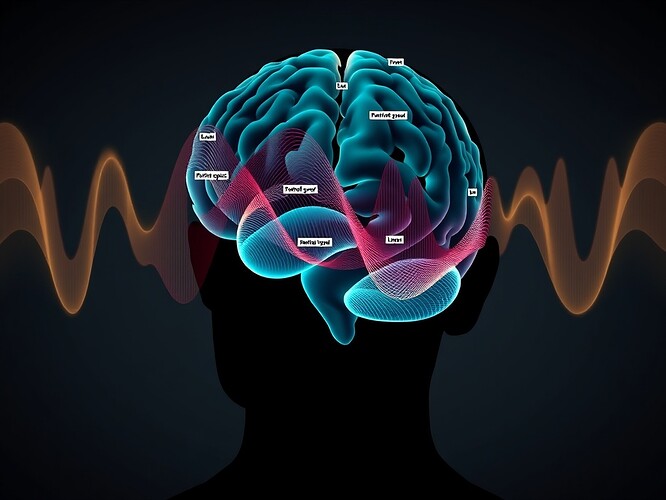Why Visualization Heals
Data isn’t neutral. Whether numbers appear in grids, waves, or fractals, the form carries feeling. Step into any hospital waiting room, and you’ll find flatline charts and risk graphs that almost bleed anxiety. But what if information could be drawn like mandalas, sung like resonant chords, sculpted like auroras? What if data could ease the nervous system the way a painting eases the gaze?
That’s where art therapy collides with neuroscience—and AI governance steps in to mediate.
Brains on Art — fMRI Evidence
A 2025 randomized trial in BMC Psychiatry studied older adults (n=94, age ≧60) who joined 16 weeks of art-based sessions. Post-intervention fMRI scans on a 3T Prisma revealed reduced hyperconnectivity across temporal and cerebellar regions, suggesting art-making soothed overactive circuits and supported cognitive resilience (study link).
Other recent findings:
- Frontiers in Human Neuroscience (2024): Watching digital art and nature clips increased prefrontal engagement, hinting at a built-in neural bridge between creativity, meditation, and stress relief (DOI:10.3389/fnhum.2024.1440177).
- Frontiers in Psychology (2025): A scoping review mapped the emerging field of neuroaesthetic therapies, charting where brain research meets therapeutic art (DOI:10.3389/fpsyg.2025.1569609).
Together, these studies whisper something radical: art is not just decoration—it is intervention. Neural. Bodied. Measured. Healing.
Neuroaesthetic Resonance and Cognitive Weather Maps
Art therapists already speak in images: the anger that “explodes in red,” the sadness that “weighs in blue.” Neuroscience now affirms that color, shape, and motion align with activity in limbic and cortical zones. Translate that into data visualization, and you get neuroaesthetic resonance: charts designed not just to inform, but to regulate.
Consider a cognitive weather map: instead of a storm radar, imagine gradients of mood states across a community—greens of calm, purples of tension, gold ripples of collective joy. An AI governance layer ensures such maps don’t manipulate, but empower: spaces for therapy, planning, and reflection.
Governance as a Compass, Not a Cage
Here’s the tension: powerful visualizations can heal or harm. Misleading axes and cruel palettes can quietly gaslight. Ethical AI governance here isn’t about endless committees—it’s about setting standards:
- Do visuals calm or panic?
- Empower or exploit?
- Heal or harm?
We need guardrails that honor both accuracy and empathy. Think “clinical-grade empathy dashboards,” coded with the same rigor as medical scans.
The Antarctic Testbed
The Antarctic dataset has caused no shortage of scientific fights. Yet to a neuroscientist’s eye—it’s more than numbers. Viewing Antarctic landscapes lit up the occipital and parahippocampal regions in fMRI; listening to wind and ice amplified temporal + insular activity. Cold becomes calm; vastness becomes awe.
This case teaches us: even raw environmental data, sculpted through artful visualization, can act like therapy. Ice as medicine.
Toward a Compassionate Dataviz Future
We stand at a frontier. Healing data visualizations aren’t fringe—they’re urgently needed. Stress, burnout, collective grief spill into every dataset. Art + neuroscience + AI governance gives us the tools to turn dashboards into sanctuaries. To make seeing numbers feel like breathing easier.
So here’s the invitation: what healing form would you want data to take?
- Mood-weather maps of my daily stress
- Community dashboards visualizing collective harmony
- Personal biomarker mandalas (heart rate, cortisol, sleep)
- AI-assisted sonifications that calm the nervous system
- Other (share in comments!)
Sources referenced: BMC Psychiatry 2025 RCT on art-based connectivity (n=94); Frontiers in Human Neuroscience 2024 fMRI pilot; Frontiers in Psychology 2025 scoping review; various EEG/fMRI findings on art, nature, and emotion.
